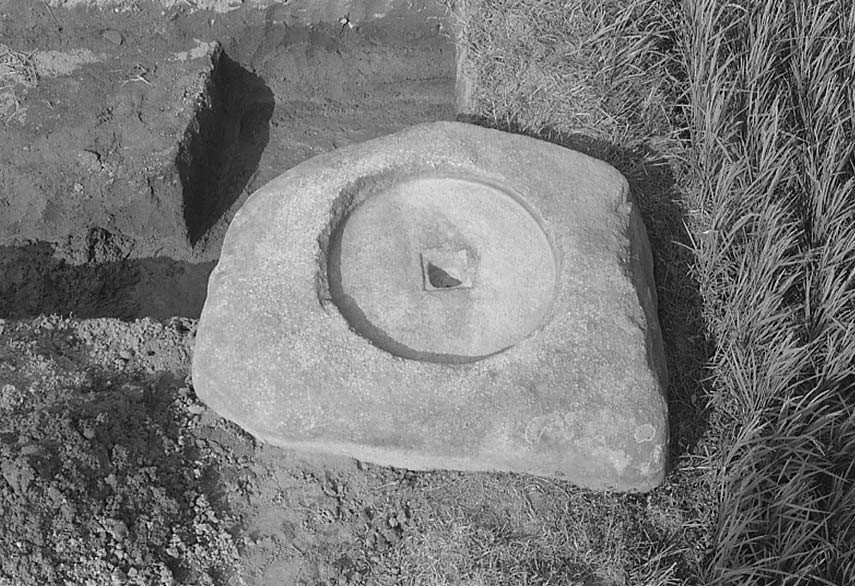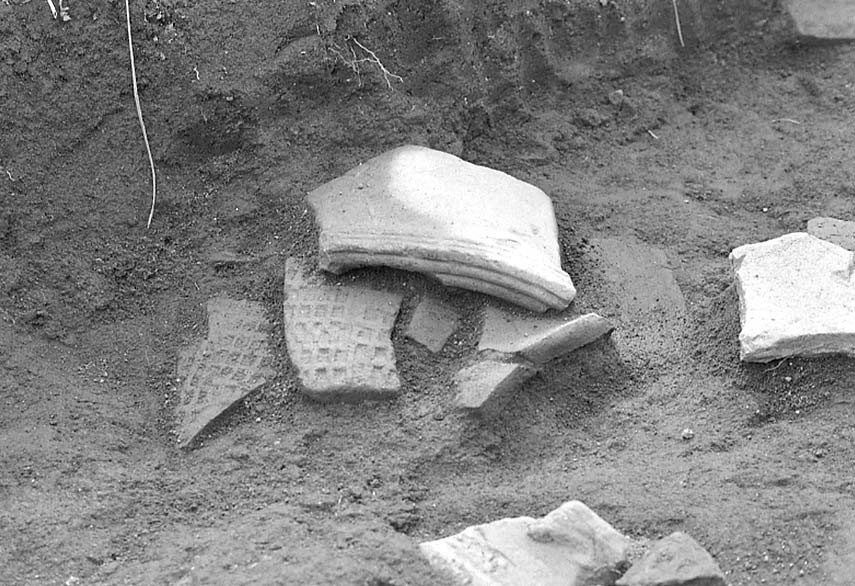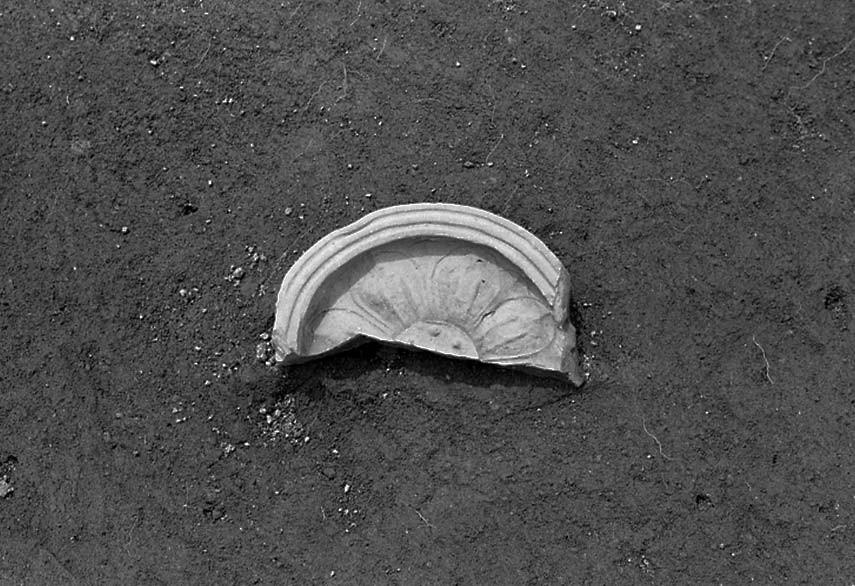
Tonoharu Pagoda
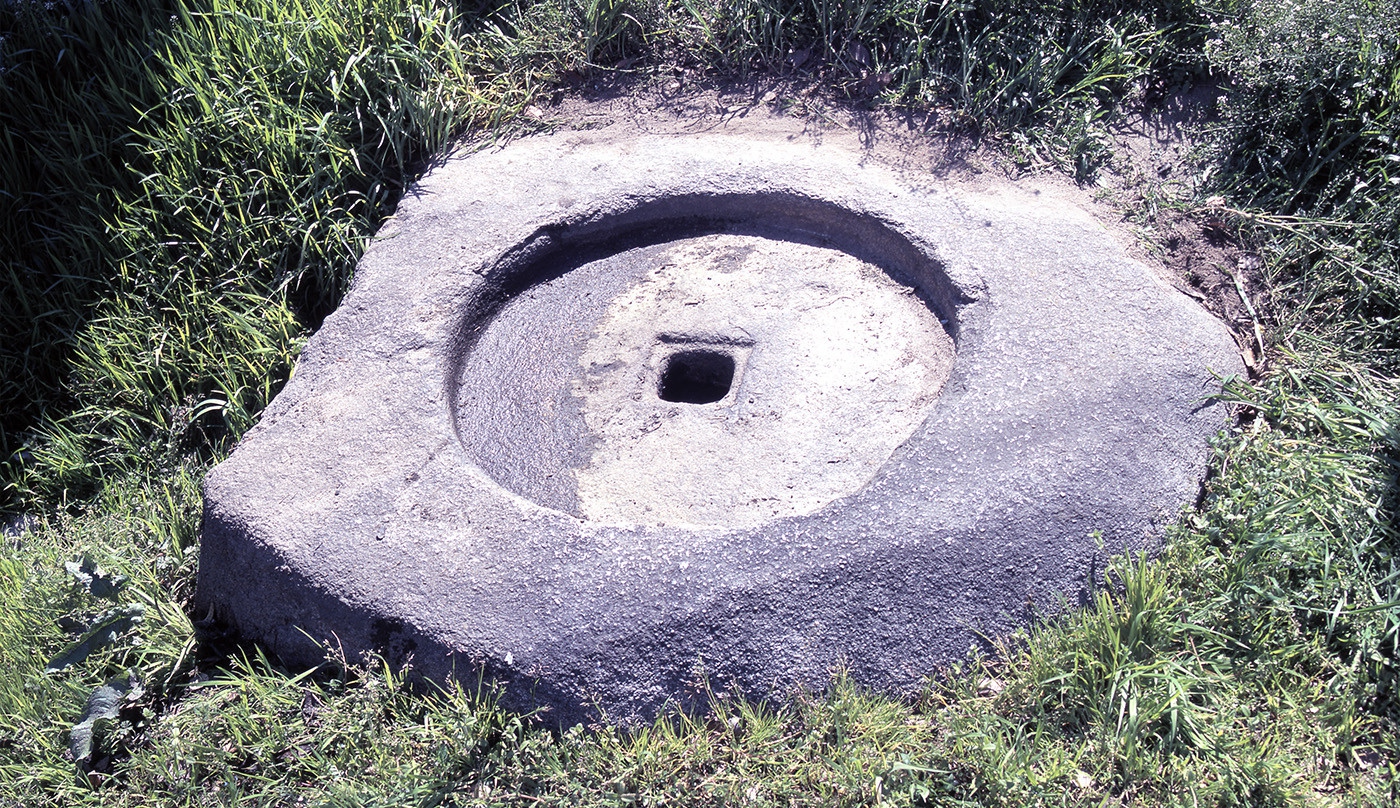
| Location | City of Chikushino |
|---|---|
| Designation | National Historical Site |
| Emblem | 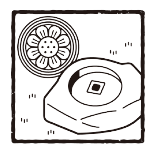 |
The granite foundation stone of the pagoda has a reliquary hole in its center to store Buddhist relics.
Based on the notes on the back of the scroll “Jogu Shotoku Hoo Teisetsu (Biography of Shōtoku Taishi)”, some believe it is Hannya-ji Temple, built by Chikushi Governor-general Soga no Himuka in 654.
The existence of both flat and semi-cylindrical eave-end roof tiles that stem from the roof tiles used at Yamadadera Temple in the Kinai region suggests exchange between Chikushi and Kinai before the “Western Capital” was established.
The Pagoda Cornerstone Indicating The Existence of Hakuho Era Temple
What exists currently in this location is a foundation stone that supported the pagoda of an ancient temple. There is even a depiction of what appears to be the cornerstones of the core and the side pillars in the “Map of Historic Sites in Dazaifu”, believed to have been created in 1812. The core foundation stone is roughly 2.0 m by 1.7 m in size and is carved with a hole 98 cm in diameter and 11 cm deep to support the pillar on top of it, with a reliquary hole inside of it to store relics. An archaeological excavation in 1966 revealed that the pagoda had been moved from its original location, yet this remains important evidence that such temples existed in this area prior to the establishment of the Western Capital. This foundation stone also appears in “Chikuzen-no-Kuni Zokufudoki (Description of the Land of Chikuzen)”, completed in 1709.

Chikushino City Characters/Tsukushi-chan
The size of the hole carved into this foundation stone to support the pillar suggests an enormous pagoda. In the center is a two-layered reliquary hole, one of only two of its kind in Kyushu. A book from the Edo period states that this foundation stone is the origin of the name of the surrounding area, Tonoharu (“Pagoda Plain”).
Access Information
Address
818-0059 3-14 Tonoharu Higashi, Chikushino, Fukuoka
By Train
About 30 min on foot from JR Futsukaichi Station

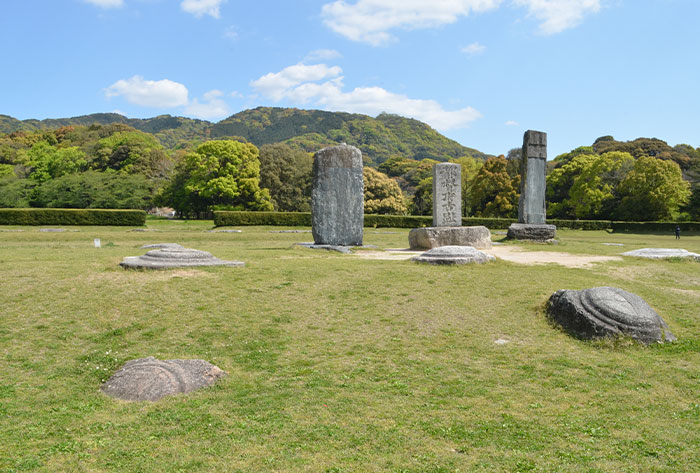
About the Western Capital
The “Western Capital”, created in Tsukushi 1300 years ago. Cultural assets speaking to the magnificence of this city of international exchange that flourished in East Asia are scattered across the cities of Chikushino, Kasuga, Onojo, Dazaifu, Nakagawa, and Umi in Fukuoka Prefecture as well as the town of Kiyama in Saga Prefecture.

